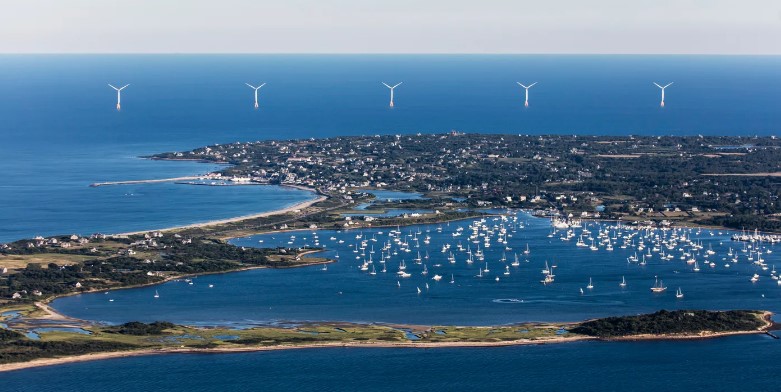By PAULA TRACY, InDepthNH.org
HAMPTON – Fisherman David Goethel is looking at the prospect of large scale wind production in the Gulf of Maine and what changes that may mean to fish behavior, marine environment and life as it has been known on the ocean for centuries.
He told an online seminar for the New Hampshire Network for Environmental, Energy and Climate Monday night that “Europe built first and studied later,” the impacts to turbines in their waters.
He said people should also think of food security versus energy security when they look at impacts.
“It’s just as vital and yet, I don’t think it’s getting enough discussion,” he told about 60 people listening to the presentation entitled “Planning for Offshore Wind AND Sustainable Fisheries in New England.”
The central question discussed was can both fishing and renewable wind harvesting coexist and what would the impacts be?
Panelists said it depends on what is built, where and who provides input in the planning.
The Gulf of Maine has no big wind farms yet.
But it has big potential for capturing wind to make electricity. It is, however, smack dab in the middle of one of the most productive, but quickly warming fisheries in America.
Wind farms began in 1991 in Denmark and have exploded across Europe while the United States is slowly coming on line with various types of turbines whose sizes are growing, said Dr. Lisa Methratta of the New England Fishing Science Center in Rhode Island.
Methratta said the impacts vary in types of constructions but universal considerations should be given to habitat conversion, creation of artificial reefs, invasive species facilitation, altered ocean physics, chemical contaminants from the turbines, noise impacts particularly to the fish species and electromagnetic fields, and fishing operations.
Europe, she said, is not the same. There are different species of fish, different ocean topography and cumulative impacts now being studied that are not necessarily specific to our region.
The federal Bureau of Ocean Energy Management or BOEM is studying the gulf and looking at data in the hopes that they can find sites to develop wind production to minimize conflict.
Cheri Patterson, marine resource manager for the New Hampshire Fish and Game Department, said study of the area for wind is just starting in reality.
One of the most important coastal fisheries here is lobster but there are also recreational fishing vessels in addition to commercial vessels and the department has concerns for not only fish species but for birds and bats who now share the ocean and will have to contend with a new challenge if turbines are located here.
There are seven offshore wind turbines in the United States.
Tiffany Smythe worked on a non-federal effort to develop the Block Island Wind Farm between 2014 and 2019. She said the Rhode Island Coastal Resources Management Council did a rigorous analysis with the fisheries community to try to identify a site to minimize conflict.
She said many members of the fishing community were satisfied that they were heard through the process.
She said “who facilitates matters.”
The bottom line from the speakers is that locating wind depends on many factors and analysis needs to be thorough and that stakeholders need to be heard as the process moves forward to find more renewable power resources in the region.
The hour and a half presentation was recorded and may be made available by emailing centerforsustainablefisheries.org.






